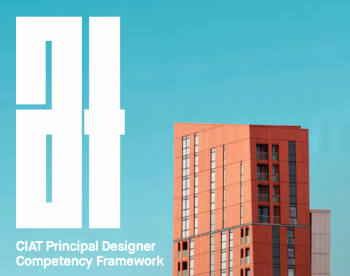Lumber Estimator
How to Integrate Lumber Takeoff with Other Construction Estimation Practices
Successful project design and budgeting depends on a combination of timber flights and other construction estimation techniques. Determining and recording the quantity of all timber materials required for a project known as timber moving is an important step in the cost estimation process and with the other methods of estimation can improve efficiency, reduce errors and simplify the process. This article delves into the steps and best practices for effectively integrating lumber takeoff services with other construction estimation processes.
Contents |
[edit] Understanding Lumber Takeoff
The process of identifying and recording each type and quantity of timber needed for a construction project is called "lumbering." This includes tree species, height and size. Since it directly affects the cost estimation and budgeting phases, the accuracy of the lumber takeoff is quite important. Inaccuracies at this point may result in excess or insufficient materials, which could extend project durations and raise expenses.
[edit] The Role of Lumber Takeoff in Construction Estimation
One part of the more comprehensive construction estimating process is the lumber takeoff; other components include labor, equipment, subcontractor expenses, and other commodities. Accurate lumber takeoff helps in:
- Budgeting:ensuring that every expense associated with lumber is recorded.
- Scheduling:arranging for material delivery and purchase in accordance with the project schedule.
- Cost Control: keeping an eye on real expenses compared to projections to prevent budget overruns.
[edit] Steps to Integrate Lumber Takeoff with Construction Estimation Practices
- === Data Collection and Analysis ===
Obtaining the required project documents, such as construction and construction drawings, specifications, and some other relevant information, is the first step. This data forms the basis for both lumber takeoff and other estimation practices. Analyze these documents thoroughly to understand the scope and requirements of the project.
- === Use of Estimation Software ===
Modern construction projects benefit significantly from the use of estimation software. These tools allow for the seamless integration of lumber takeoff with other estimation practices. Software such as Bluebeam Revu, PlanSwift, and ProEst can automate and streamline the flight process, ensuring accuracy and efficiency.
- Bluebeam Revu: Software such as Bluebeam Revu, PlanSwift, and ProEst can automate and streamline the flight process, ensuring accuracy and efficiency.
- PlanSwift: Offers a full suite of aviation and accounting tools, supporting a variety of construction materials and personnel.
- ProEst:a single piece of software for construction estimating that combines bid management, cost estimation, and takeoff.
- === Standardization of Processes ===
To guarantee accuracy and consistency across projects, standardized procedures for takeoff and estimating should be established. Create templates and checklists to help direct the commercial lumber estimating procedure and ensure that nothing is missed and all requirements are met. Additionally, standardization makes it easy to train new team members and allows operations to scale.
- === Collaboration and Communication ===
Effective integration requires robust communication between different teams involved in the estimation process. Lumber takeoff should not be isolated from other estimation practices. It is possible to guarantee that all stakeholders are in agreement and that any differences are quickly resolved by holding regular meetings and utilizing collaboration solutions such as Microsoft Teams or BIM 360.
- === Cross-Verification ===
To guarantee the correctness of the lumber takeoff and its integration with other estimating procedures, cross-verification is crucial. Review and audit the takeoff data on a regular basis in accordance with the project objectives and specifications. Engage a number of team members in the verification procedure to identify any possible mistakes or omissions.
- === Continuous Improvement ===
Your estimating procedures should be updated to reflect the ongoing changes in the construction sector. Promote a continuous improvement culture in which input is obtained and put to use on a regular basis. Use past project data to refine and enhance your lumber takeoff and estimation processes.
[edit] Best Practices for Effective Integration
- === Detailed Documentation ===
Keep thorough records of the lumber takeoff procedure, including calculations, assumptions, and data sources. This documentation helps to resolve any conflicts or discrepancies that may emerge and acts as a reference for initiatives in the future.
- === Training and Development ===
Invest in regular training and development programs for your team. Ensure they are proficient in the latest estimation software and techniques. A well-trained team can significantly enhance the accuracy and efficiency of your lumber takeoff and overall estimation process.
- === Technology Integration ===
Leverage technology to integrate lumber takeoff with other construction estimation practices seamlessly. Take use of cloud-based technologies for data sharing and real-time collaboration. By offering a consolidated platform for all project data, cutting-edge technologies like Building Information Modeling (BIM) can also be extremely important in combining different estimating techniques.
- === Vendor and Supplier Coordination ===
Effective coordination with vendors and suppliers is critical for accurate lumber takeoff and estimation. Develop a solid rapport with your suppliers and include them in the process of estimation from the outset. This guarantees that you have access to the most recent pricing and availability data, which is essential for precise cost estimation.
- === Risk Management ===
Your estimating method should take risk management procedures into account. Determine possible hazards that might affect the availability or price of lumber and create plans to mitigate them. By taking a proactive stance, you can control uncertainty and prevent overspending.
[edit] Challenges and Solutions
Integrating lumber takeoff with other construction estimation practices can present several challenges:
- === Data Discrepancies ===
Inaccuracies may result from differences in data obtained from various sources. Solution: Put in place a reliable data management system and make sure that data is routinely cross-checked.
- === Resistance to Change ===
Teams may resist adopting new technologies or processes. Solution: Provide comprehensive training and demonstrate the benefits of the new systems to gain buy-in.
- === Complexity of Projects ===
Larger and more complex projects can make integration difficult. Solution: Break down the project into smaller, manageable segments and integrate estimation practices at each stage.
[edit] Conclusion
Integrating lumber takeoff with other construction estimation practices is crucial for the success of construction projects.It guarantees precise cost control, smart scheduling, and accurate budgeting. Through the utilization of technology, process standardization, and collaboration, construction businesses can improve the precision and efficacy of their estimation procedures. The effective integration of lumber takeoff with other estimating techniques is facilitated by ongoing improvement and risk management, which eventually results in better project outcomes.
Featured articles and news
Twas the site before Christmas...
A rhyme for the industry and a thankyou to our supporters.
Plumbing and heating systems in schools
New apprentice pay rates coming into effect in the new year
Addressing the impact of recent national minimum wage changes.
EBSSA support for the new industry competence structure
The Engineering and Building Services Skills Authority, in working group 2.
Notes from BSRIA Sustainable Futures briefing
From carbon down to the all important customer: Redefining Retrofit for Net Zero Living.
Principal Designer: A New Opportunity for Architects
ACA launches a Principal Designer Register for architects.
A new government plan for housing and nature recovery
Exploring a new housing and infrastructure nature recovery framework.
Leveraging technology to enhance prospects for students
A case study on the significance of the Autodesk Revit certification.
Fundamental Review of Building Regulations Guidance
Announced during commons debate on the Grenfell Inquiry Phase 2 report.
CIAT responds to the updated National Planning Policy Framework
With key changes in the revised NPPF outlined.
Councils and communities highlighted for delivery of common-sense housing in planning overhaul
As government follows up with mandatory housing targets.
CIOB photographic competition final images revealed
Art of Building produces stunning images for another year.
HSE prosecutes company for putting workers at risk
Roofing company fined and its director sentenced.
Strategic restructure to transform industry competence
EBSSA becomes part of a new industry competence structure.
Major overhaul of planning committees proposed by government
Planning decisions set to be fast-tracked to tackle the housing crisis.
Industry Competence Steering Group restructure
ICSG transitions to the Industry Competence Committee (ICC) under the Building Safety Regulator (BSR).
Principal Contractor Competency Certification Scheme
CIOB PCCCS competence framework for Principal Contractors.
The CIAT Principal Designer register
Issues explained via a series of FAQs.
























